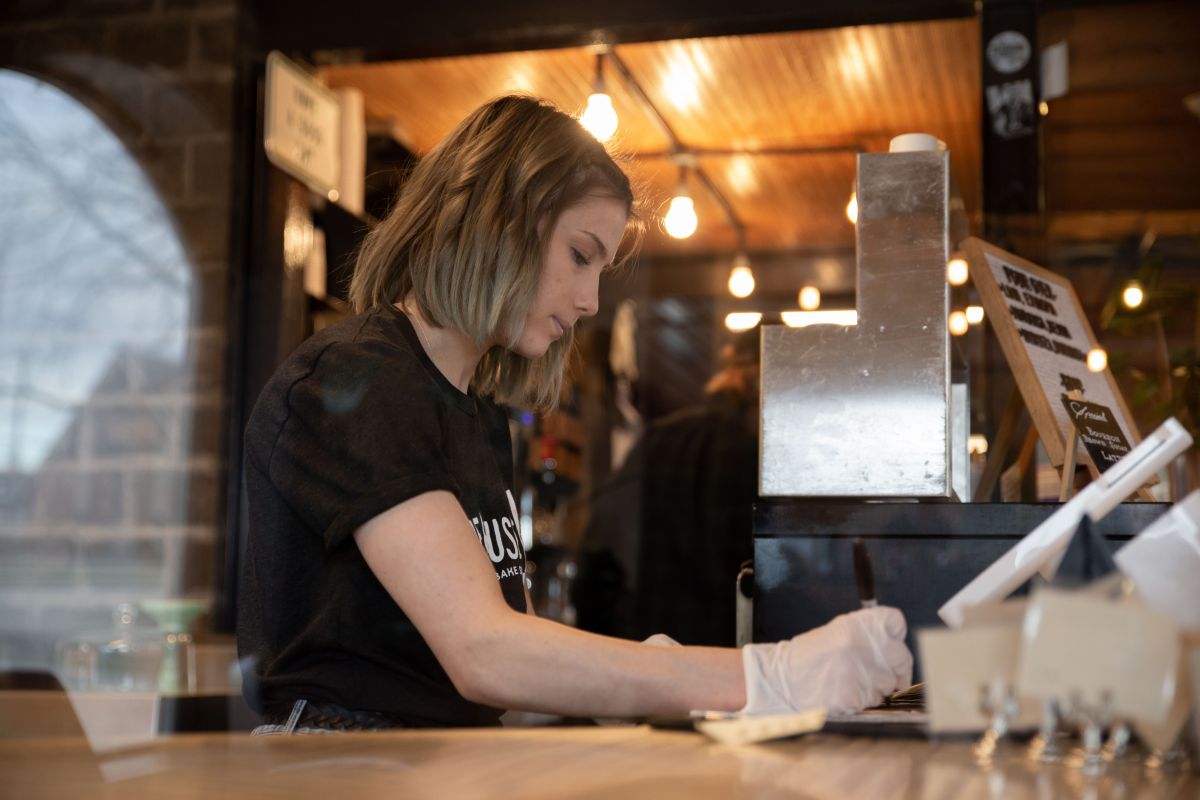
With a dip in consumer spending and retailers urging customers to pay with cards instead of cash, the coronavirus pandemic has taken coins out of circulation and created a shortage across the United States. By now, it’s likely you’ve seen signs at your grocery store asking you to pay with exact change.
The Federal Reserve has created a task force to study the problem. With representatives from the U.S. Mint, Walmart, Coinstar and the Fed’s own experts, the task force is hoping to find solutions for bringing coins back into this economy.
Sherri Reagin, the executive vice president of North Salem State Bank in Indiana, is also on the task force. Reagin spoke with “Marketplace” host Kai Ryssdal about solutions to get “coins back into the right hands.” The following is an edited transcript of their conversation.
Kai Ryssdal: So where are all the coins in this economy?
Sherri Reagin: The coins are actually still available. They are out in circulation. They just are not moving where they need to be. In 2019, we had 47.4 billion coins in circulation, and currently there’s 47.8 billion. So we actually have more out there. They just need to get moving.
Ryssdal: So that’s that billions of dollars’ worth of coins, right? Almost $50 million worth of coins?
Reagin: Yeah, there’s plenty of coin out there.
Ryssdal: OK, so other than me with probably a couple hundred dollars in milk jars on my dresser and my now abandoned office, they’re just not being spent. Is that what’s going on? Because people aren’t going out there and spending money?
Reagin: You’re right. People have absolutely changed their spending habits during the pandemic. There’s a lot of shuttered businesses, mass transit isn’t running, laundromats have been closed. Oftentimes, you know, our bank customers have been saving coin and bring it into cash in to go on vacations or trips, and people aren’t traveling right now. So they’re not taking their coin into Coinstar machines and things like that.
Ryssdal: OK, so as powerful as the Federal Reserve is and as well intentioned as this task force is, how are you going to change consumer behavior? Or do we just have to deal with a coin shortage until, I guess, there is a vaccine, right?
Reagin: Well, you know, we’re currently working on getting communications out to help people address the coin shortage and help address the supply chain, because we believe that it’s a supply chain issue, and we just need to get the coins back into the right hands.
Ryssdal: What happens though, if I — and look, this is going to sound like a trivial thing, but it’s real for so many people — if I have to have quarters to do my laundry, and I can’t get quarters? What do I do?
Reagin: And that is the real problem. You know, there’s a lot of local retailers who aren’t accepting cash right now because they don’t have the change to give their customers or they’re putting it back on a card. But you know, these are unprecedented times. We don’t really know what it’s going to look like in two weeks. So we just encourage everyone to look under the couch cushions and in their cars and somehow have the coin back in circulation.
Ryssdal: If you and the Fed and this task force are successful, how long you figure until we’re approaching something normal with the coin shortage in this economy?
Reagin: I don’t know that we have any projection of what that’s going to look like. I think in some metropolitan areas, bank lobbies are not yet open. So then it becomes how do we get the coin to the banks? Nobody knows how this pandemic is going to end or how much longer it’s going to continue. We’re just going to take it one day at a time.
Related Stories
What’s the latest on the extra COVID-19 unemployment benefits?
As of now, those $600-a-week payments will stop at the end of July. For many, unemployment payments have been a lifeline, but one that is about to end, if nothing changes. The debate over whether or not to extend these benefits continues among lawmakers.
With a spike in the number of COVID-19 cases, are restaurants and bars shutting back down?
The latest jobs report shows that 4.8 million Americans went back to work in June. More than 30% of those job gains were from bars and restaurants. But those industries are in trouble again. For example, because of the steep rise in COVID-19 cases in Texas, Gov. Greg Abbott, a Republican, increased restrictions on restaurant capacities and closed bars. It’s created a logistical nightmare.
Which businesses got Paycheck Protection Program loans?
The numbers are in — well, at least in part. The federal government has released the names of companies that received loans of $150,000 or more through the Paycheck Protection Program.
Some of the companies people are surprised got loans include Kanye West’s fashion line, Yeezy, TGI Fridays and P.F. Chang’s. The companies you might not recognize, particularly some smaller businesses, were able to hire back staff or partially reopen thanks to the loans.
You can find answers to more questions on unemployment benefits and COVID-19 here.
As a nonprofit news organization, our future depends on listeners like you who believe in the power of public service journalism.
Your investment in Marketplace helps us remain paywall-free and ensures everyone has access to trustworthy, unbiased news and information, regardless of their ability to pay.
Donate today — in any amount — to become a Marketplace Investor. Now more than ever, your commitment makes a difference.
"all" - Google News
July 23, 2020 at 04:27AM
https://ift.tt/39ozdqC
Where did all the coins go? - Marketplace
"all" - Google News
https://ift.tt/2vcMBhz
Bagikan Berita Ini














0 Response to "Where did all the coins go? - Marketplace"
Post a Comment